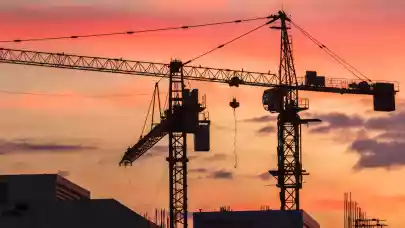
According to Dr Aleš Pustovrh at the EECFA, which conducts research on the construction markets of 8 Eastern European countries, residential construction boom in Slovenia continues and is set to peak this year. Nevertheless, with increasing interest rates on mortgage loans, residential construction will be facing significantly lower demand in the second half of 2023.
Slovenia continued to see strong economic growth in 2022, up by 5.4%, beating the expectations at the start of the year. But this growth greatly slowed down in late 2022 and early 2023 as increasing interest rates and high inflation started to impact disposable income. This has not resulted in slower construction growth; both civil engineering and non-residential construction greatly expanded in 2022 in nominal terms. The level of construction activity in these two subsectors was still quite close to the 2015 average (even slightly below that average in non-residential construction). But most of the nominal growth was the result of higher inflation and thus, higher construction costs.
In residential construction, the situation is completely different. The level of residential construction was 3.3 times higher in 2021 than in 2015 in real terms (and 4 times higher in nominal terms). And in 2022 it was a staggering 5.35 times higher in real terms than in 2015 (7.8 times higher in nominal terms). At the beginning of 2023, it continued to grow by 46% annually, which is unsustainable.
While demand for dwellings has likely exceeded demand in the post-COVID boom of 2021 and 2022, supply has been catching up lately and more and more dwellings have been completed. The total value of sold real estate in 2015 was estimated at €1.8 billion, while in 2021 at €2.8 billion. Approximately 10000 dwellings are sold in Slovenia on average every year, with around 3000 in Ljubljana. At least that many are estimated to be currently under construction in Ljubljana alone. These will enter the market in 2023 and 2024, but potential customers for these dwellings are facing elevated interest rates on mortgage loans. As per recent calculations, monthly loan repayment for a €200,000 loan in Slovenia has increased by €400-500, making potential customers think twice before even applying for a loan. This is already evident in the real estate prices in Ljubljana that peaked in Q1 2022 and have not increased since, even though the overall inflation rate was almost 10% in 2022.
That means that skyrocketing housing construction in Slovenia, especially in its capital city, will be facing significantly lower demand than it was expected when construction started in 2021 and 2022. And even though the residential construction growth rate is still very high, by most estimations, demand will considerably decline in the second half of 2023. If residential construction stays at the same level as in 2022, a lot will depend on public schemes for non-profit dwellings starting to contribute to total residential construction output. Private housing construction will most likely complete the projects that were started but will be reluctant to start new ones. In Q1 2023, 12% fewer building permits were issued for dwellings than a year ago.
Residential construction is set to reach its peak output in the first half of 2023. This will impact overall construction too, because this segment is more important than non-residential or civil engineering. It seems that the residential construction boom in Slovenia will reach its peak in 2023, but the real question is how fast it will decrease in the future.



